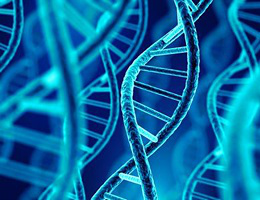Gene isolation, modification and amplification have been described in previous section. An approach called transfection make it possible to introduce gene of interest into cultured cells, where they can be transcribed and translated, This approach can be used to increase the concentration of molecule of interest and detect its function in cells, There are various methods of transfection: some rely on physical treatment (electroporation, nanoparticles, magnetofection), other on chemical materials (lipofection, calcium phosphate, DEAE-dextran) or bio-logical particles (viruses) that are used as carriers. Then the transfected cells is cultured in particular medium in which nontransfected cells cannot survive, thus, those cells that have been inserted the foreign DNA can be selected.
Through transfection, the DNA fragment carrying a gene of interest usually inserts into the chromosomes randomly, it can replace one of the two copies of the normal gene by homologous recombination. If the gene replacement happens in the germ-line cells, it can then be passed on to progeny. These animals which chromosome permanently altered and contain the foreign or modified DNA are called transgenic animals. For example, the target gene can be replaced in the transgenic mouse. Transgenic animal has presented excellent model for understand gene function. If both copies of the target gene is deleted or completely inactivated, the resulting animal is called knockout animal. Any DNA sequence or gene within the genome can be altered using this method.

Gene knock out technique is generally used to prove Gene knock out for a special process. However, sometimes the deletion of the target gene has little or no alteration in the animal’s phenotype. It is difficult to interpret such results. In some cases, the absence of the target gene leads to the death of the animal before it reaches adulthood, which also makes it difficult to confirm the role of the gene in cellular function. A technique called conditional knock out are then developed to allow a specific gene to be switched off in only one or several desired tissues, while the gene expressed in other tissues are not be influenced. The Cre-loxP system allows the function of the gene in the affected tissue or its role during development can be studied. The Cre recombinase can recognize the lox sites which contain a specific short DNA sequences. For example, there need two kinds of transgenic mice. In one transgenic mice, the target gene is inserted between a pair of lox sequences. Another transgenic mice can express the Cre recombinase gene under the control of an inducible promoter. If the two kinds of transgenic mice are mated, in some of their progeny, when Cre recombinase is expressed in the specific cells or tissues, it will catalyze recombination between the lox sequences, then the target gene is deleted and its activity also be eliminated in specific cells or tissues.
The ability to engineer genomic DNA in cells and organ-isms has major implications for studying gene function. But introducing site-specific modifications in the genomes of cells and organisms remained elusive. Many approaches relied on the principle of site-specific recognition of DNA sequences by oligonucleotides, small molecules, or self-splicing introns. Two approaches relied on the principles of DNA protein recognition, such as site- directed zinc finger nucleases (ZFNs) and TAL effector nucleases (TALENs). Another approach called CRISPR (clustered regularly interspaced short palindromic repeats)-Cas9 (CRISPR associated proteins 9) using RNA-programmable facilitate genome engineering. The CRISPR gene transcribe a group of RNAs (guide RNAs) which are able to guide Cas protein to recognize, bind, and cleave certain loci on target double-stranded DNA (Fig. 3-12).The basic strategy is as follows: Cas9 protein and the designed guide RNA which can recognize the particular location of a target gene on the genome are expressed in ES cells. TheCas9 and guide RNA associate, the complex then bind and cleave the matching sequence on the genome, and double-strand break in target genomes can be efficiently induced. The double-strand breaks can further be repaired by a precise homologous recombination, sometimes, the altered gene which has been introduced to ES cells is chosen to repair the .damage. Here, the target gene can be replaced by altered gene using the CRISPR system.







